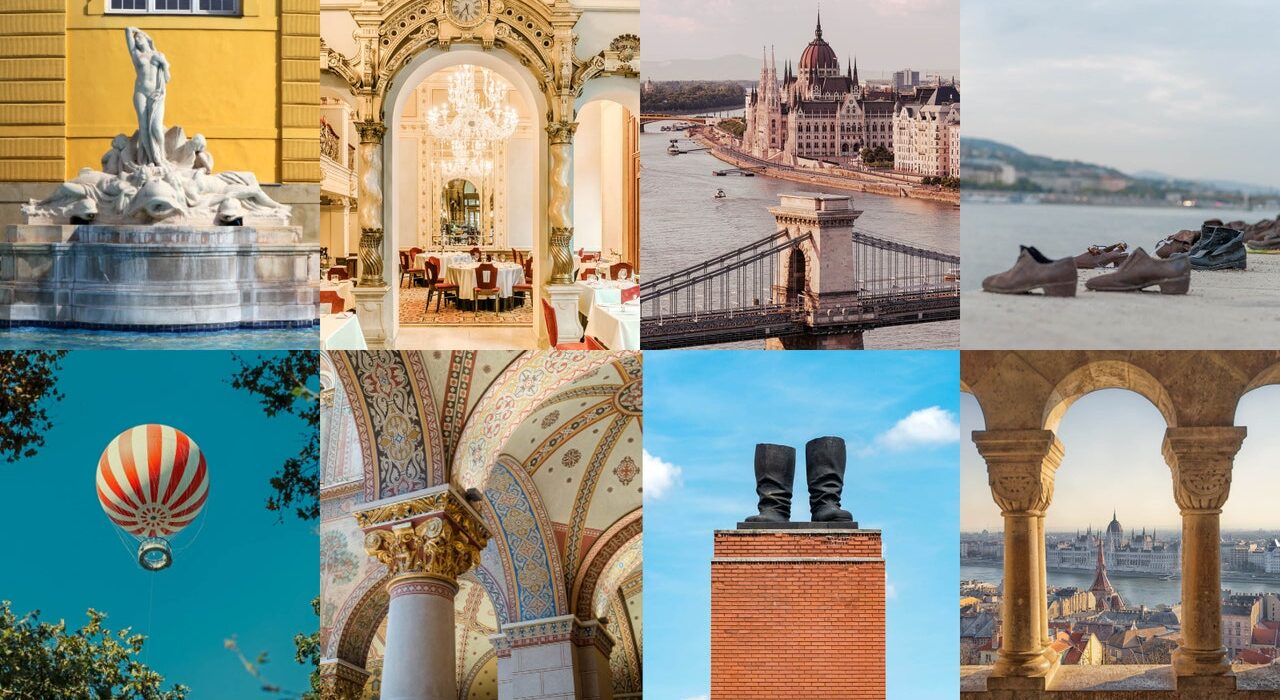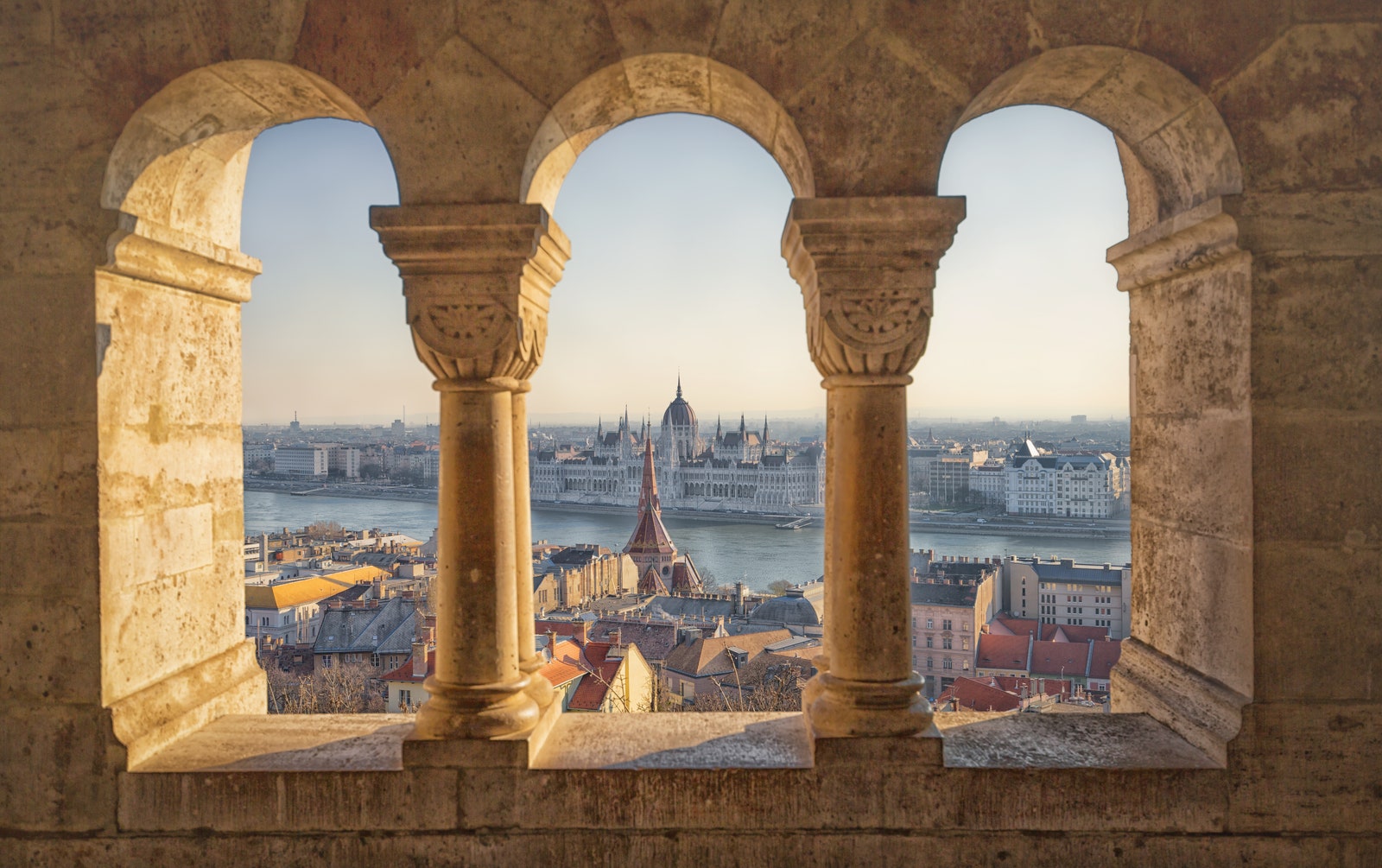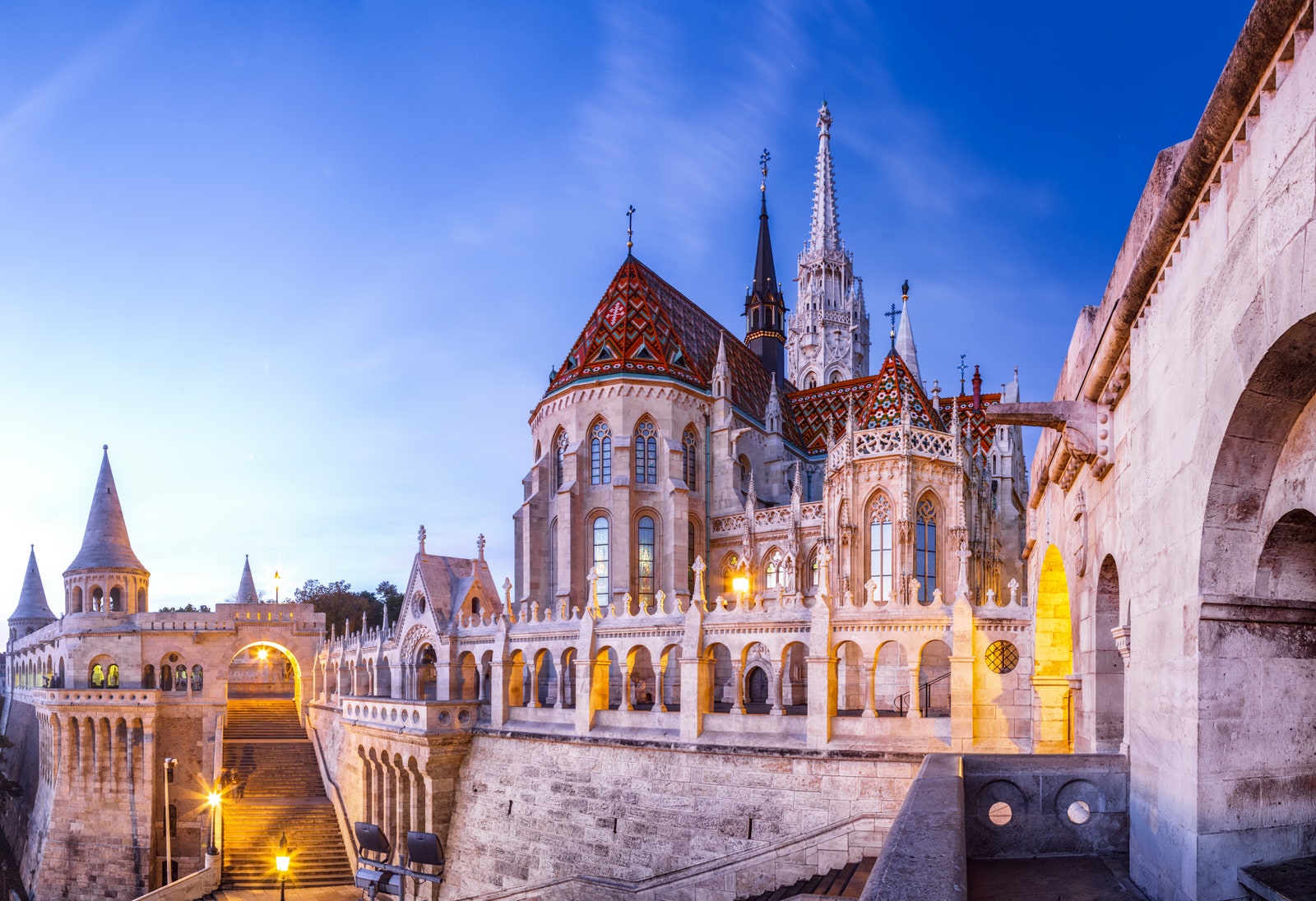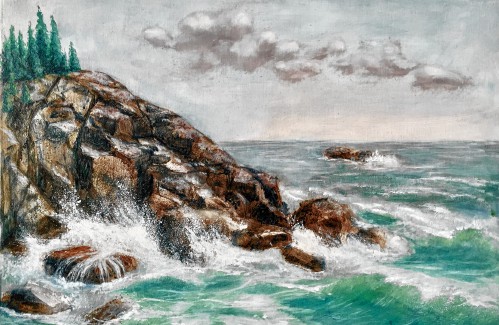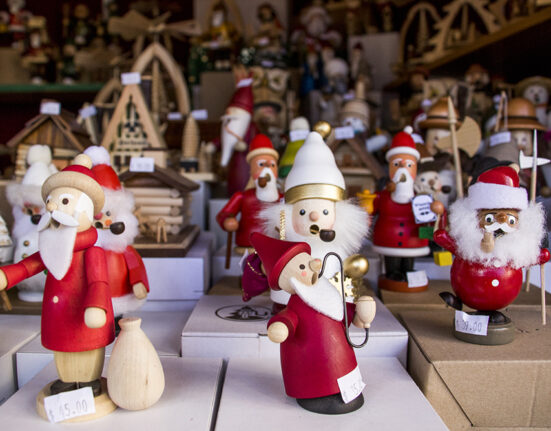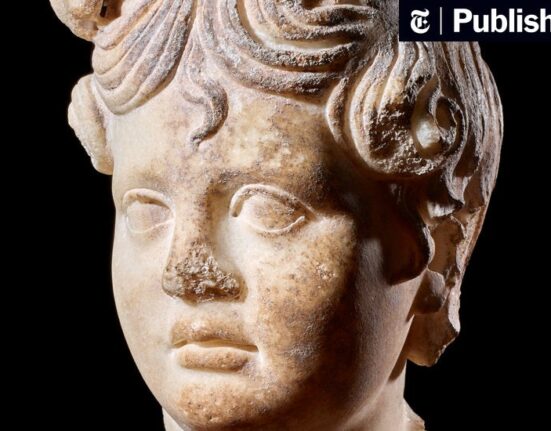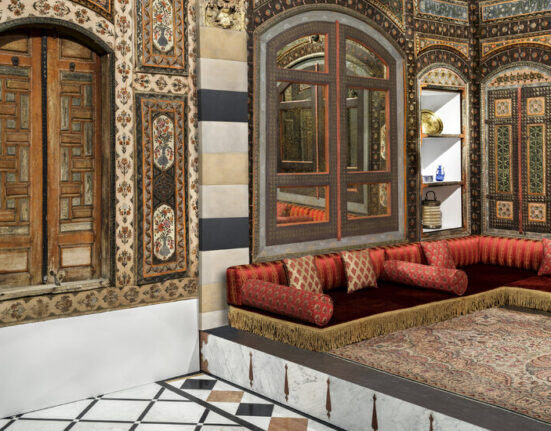Parliament from Fisherman’s BastionGetty Images
2. Explore the Castle District
Located high up on the Buda side of the city, the views over the river and surrounding architecture aren’t to be missed, so if you don’t object to a touch of the touristy, take the funicular up from the near the Chain Bridge – it’s been in operation since 1870 and allows you to soak up the views on the way.
It’s worth hiring a guide or joining a tour when you explore Budapest’s vast castle district because, as aesthetically fascinating as the complex is, these walls hold a wealth of insight that may go unnoticed without expert commentary. This area has been destroyed and rebuilt many times throughout history, but the signs aren’t always immediately apparent – for instance, the lions guarding the entrance to the Lion’s Court have been crudely patched up. Other areas of the complex are currently being reconstructed, thanks to the National Hauszmann Program, which aims to return the castle district to its original form – a far cry from the plans of the Soviet era that considered knocking the whole complex down and building a blank, modernist structure for officials. A few minutes walk away is the gloriously Gothic Mathias Church, complete with a statue of Hungary’s first king, St Stephen, and the turreted Fisherman’s Bastion next door. Underground, a system of caves and tunnels can be visited on a guided tour.
Fisherman’s Bastion and Matthias ChurchGetty Images
3. Enjoy the city’s musical offerings
Music is tightly woven into Budapest’s – indeed, Hungary’s – history. From 11th-century Gregorian chants to folk music and the enduring genius of Liszt and Kodály, this is a city that sings. Both the Matthias Church in the castle district and St Stephen’s Basilica on the Pest side of the Danube host recitals throughout the year, while Budapest Opera House, a gilded confection restored in the 1980s, is now open for tours and nights spent enveloped in soaring acoustics, luscious oak panelling and ornate frescoes. Over in the City Park, the House of Music opened in 2022 and takes visitors on a musical journey through various forms of Hungarian music, classical composers and explains how the rise of television and technology has an impact on the music industry. Complete your musical journey with a drink at the Hard Rock Hotel. Opened in 2021, it’s home to a stylishly curated array of rock memorabilia, including Prince’s purple (what else?) faux fur jacket, Madonna’s high school yearbook, Michael Jackson’s black fedora and Elton John’s bright yellow shoes. Stay at the hotel and live out your rockstar dreams with an in-room Fender guitar and amp.
4. Cross the Danube on the Chain Bridge
The glorious Danube (perhaps not as blue as Strauss would have had us think) is crossed by eight bridges in the Hungarian capital, but none so iconic as the Széchenyi Chain Bridge. Overseen by Scottish civil engineer Adam Clark, it was the first permanent bridge between the previously divided cities of Pest and Buda and has become a symbol of unification. Closed for an 18-month renovation period, the bridge has now been re-opened to pedestrians, taxis and cyclists. Stroll over its floodlit magnificence by night for the best atmosphere, and by day for the best views.
5. Walk the streets – and look up
Perhaps it sounds trite, advising visitors to a city to go for a ramble or take time while exploring, but in Budapest almost every edifice tells a story. Not only is the city an almost unfathomable mish-mash of architectural styles, ranging from Baroque and Neoclassical to Art Nouveau and Gothic, but the sheer range of modes offers insights into Budapest’s varied and complex past. In District VIII, walls are dimpled with bullet holes that, in a city where millions have been poured into restoration, is poignant: these structures wear their troubled past with a “lest we forget” defiance. Large holes can be linked to the Red Army siege of 1945, while smaller ones indicate activity during the 1956 Hungarian Revolution, which lasted for just 12 days but had a lasting impact on Eastern Europe’s place in the Cold War. Elsewhere, stop to examine the ornate facades of Kodály körönd (pause by number 14, where Miksa Róth’s mosaics frame the windows) as well as the richly coloured tiles of Emil Vidor’s Honvéd utca 16, and the peacock-ish design of the Löffler brothers’ (who also designed the Orthodox Synagogue in the Jewish Quarter) at Síp utca 17.
6. Explore the Jewish Quarter
Perhaps this hipster area has become something of a victim of its own success. Ever since the rise of the Ruin Bars (drinking establishments set up in the dilapidated remains of the post-WWII Jewish Quarter – bohemian pioneer Szimpla led the way) in the early 2000s, the area has become a magnet for those looking for the good times that Budapest has to offer. The result? The area is now attracting developers and undergoing a process of gentrification, which may eventually lead to the demise of the decrepit spaces that made Ruin Bars so popular to begin with. By all means, get in while you still can, but this historical neighbourhood has far more to offer than places to wet your whistle. Indeed, a plaque outside Szimpla states simply, “People used to live here” – and it’s this, coupled with the knowledge of the atrocities of WWII, that imbues the Jewish Quarter with fascination, albeit an uncomfortable one. Explore the area’s street art: Neopaint’s The Seamstress, at Akácfa Street 41, is particularly noteworthy since it highlights one of the professions most popular with the Jewish population in the 19th century. Delve deeper to find the Chevra Shas-Lubavitch synagogue, folded into a secret courtyard, as well as a wealth of kosher restaurants. On the pavements in front of houses from which Jewish people were seized during the Holocaust, you will find golden cobblestones beneath your feet.

